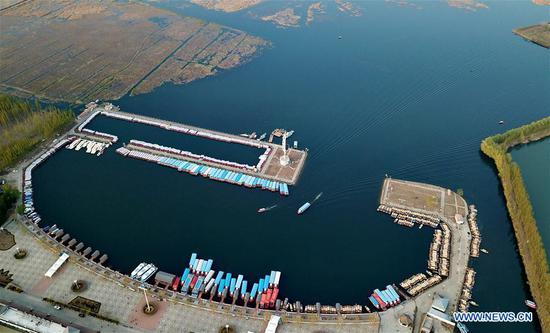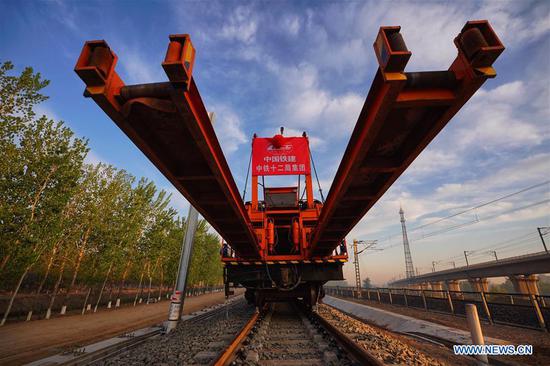The Pension Fund Actuarial Report 2019-2050, prepared by the Center for International Social Security Studies, Chinese Academy of Social Sciences, and released on April 10, has drawn wide public concern. The report, China's first actuarial report on the pension fund, focuses on the old-age pension fund, especially because Premier Li Keqiang said in this year's Government Work Report that the share borne by employers for urban workers' aged-care insurance will be lowered.
Earlier, employers had to pay 20 percent of the premium for aged-care (or pension) insurance while employees paid 8 percent. But to help the employers cope with the economic downturn pressure, the government reduced their contribution to 19 percent, which eased their economic burden by about 500 billion yuan ($74.49 billion) in the past four years. This year's Government Work Report says the employers' share will be further reduced, from 19 percent to 16 percent nationwide.
The CISSS report calculates the sustainability of the pension fund till 2050, by when China is expected to become a great, modern, socialist country.
First, the number of insured workers will change drastically with the passage of time. At present China has 270 million insured workers, with 1-2 percent increase in their number per year. But 2035 will be the turning point, when the increase ratio is expected to slow down. By 2047, the number of insured workers is likely to reach its peak of 345 million, and from then onward their number will start declining. By 2050 the total number of insured workers could fall to 341 million. And the dependency ratio of the insured workers is expected to increase from 37.7 percent in 2019 to 81.8 percent in 2050.
Second, there will also be a drastic change in the number of insured workers actually paying pension insurance premium in the next three decades. Not all insured workers pay the premium. For example, only 217 million of the 270 million insured workers have paid their pension insurance premium this year.
According to the CISSS report, the number of insured workers paying their premium will reach its peak of 290 million by 2048, and then their number will start declining-to about 289 million in 2050. And the dependency ratio of the pension fund contributors who have actually paid their premium will increase from 47 percent in 2019 to 96.3 percent in 2050. Which means that if two workers are supporting one retiree in 2019, only one worker will support one retiree in 2050.
Third, there will be a rapid increase in the number of retirees in the following years. From 102 million in 2019, the insured retiree population is expected to increase to 278 million in 2050.
And fourth, there will also be a rapid increase in the income and expenditure of the pension fund in the next three decades. This year, the fund's income is expected to be 3.71 trillion yuan, or 3.9 percent of China's GDP. It will increase to 23.63 trillion yuan in 2050, accounting for 6.0 percent of the actuarial GDP then. As for the pension fund expenditure, which is expected to be 3.6 trillion yuan this year, it will increase to 34.91 trillion yuan in 2050, accounting for 8.9 percent of China's GDP then.
According to our calculation, the pension fund could show a deficit in 2028, and by 2035 the accumulated surplus of the pension fund could possibly be used up.
All the actuarial results show the reduction in the premium rate will pose a great challenge to China to maintain the sustainability of the pension fund. In fact, a reduction in the premium rate will accelerate the expending of the accumulated pension fund. And the rapidly aging population is primarily to blame for that.
But since the aging population trend cannot be reversed, we can do the next best thing: expedite the pension fund reform and take measures to make the pension fund system more sustainable. For instance, the retirement age could be raised, and the minimum 15 years' pension insurance payment period extended. Also, the pension premium collection and payment system should be improved.
The basic pension insurance fund should accelerate the process of investment and allocation of State-owned assets. And to make the basic pension insurance system more sustainable, the authorities should comprehensively accelerate the pension fund reform.
The author Zheng Bingwen is director of the Center for International Social Security Studies, Chinese Academy of Social Sciences. The views don't necessarily represent those of China Daily.


















































